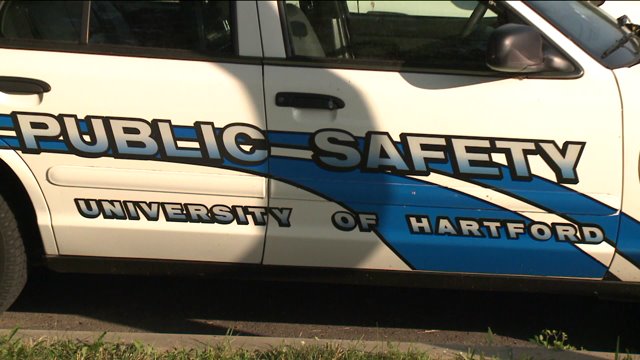Public Safety Releases Annual Security Report
October 9, 2019
On October 1, 2019, the annual security and fire safety report, containing information for the 2018-2019 academic year was published by the University of Hartford. Every year, the department of Public Safety puts together such a report which contains crucial information every student should be aware of. In this 106 page document, Public Safety provides information regarding safety policies, emergency information, crime statistics, and more.
All colleges and Universities are required by law to release an annual security and fire safety report. “The Jeanne Clery Disclosure of Campus Security Policy and Campus Crime Statistics Act is a federal statute that requires institutions of higher education (public and private) who participate in federal student aid programs (known as Title IV) to publish an ASFSR that accurately discloses campus crime statistics and security information.” (clerycenter.org)
The Chief of Public Safety at the University of Hartford, Michael Kaselouskas, spoke of the importance of providing this information to students. “It’s important for students to know the real statistics of what is going on so they can take part in trying to reduce crime in their community,” he said.
Included in every annual release, are statistics for different crime categories, and the number of reported incidents for each crime. These are separated into different groups of violent offenses, sexual assaults, VAWA reportable offenses, policy arrests, and policy referrals. For reporting purposes, the three University of Hartford campuses, main campus, Asylum Avenue campus and the Performing Arts center, are all included as separate charts.
This year’s edition includes crime statistics for the past three calendar years, with information from 2016, 2017, and 2018. While only being three years of data per report, this allows readers to see trends in campus safety from one year to another. Overall, 2018 seemed to be a relatively safe year, with most categories seeing a decrease in reported incidents. For example, from 2017 to 2018, there was a decrease in the number of robberies, burglaries, aggravated assaults, motor vehicle thefts, arsons, and stalking. Furthermore, there was a complete elimination of many of those categories with zero robberies, aggravated assaults, motor vehicle thefts, arsons, or stalking in 2018. In addition, while 2016 and 2017 saw a combined 27 burglaries, there were only two reported cases in 2018.
Alongside a decrease in most crime divisions, there was also a decrease in most policy infringement categories. In 2017, there were 149 liquor policy referrals and 156 drug policy referrals. However, in 2018 those numbers dropped to 70 liquor policy referrals and 111 drug policy referrals. There were also zero liquor policy related arrests, and only three drug policy related arrests in comparison to 2017’s 13 drug arrests.
According to Chief Kaselouskas, there were no policy changes or changes in enforcement to influence such a decrease in policy infractions, but that the incidents just seem to be decreasing on their own. He said, “in general with our drug policy violations, we just don’t have a lot. The amount of drug calls we go on are less and less.” Whether it be because students are choosing to partake in these activities off-campus instead, or because they are actually not breaking the policy as frequently, the numbers show there are simply less policy infractions as in the past.
While many types of crime have been on the decline at the University of Hartford, there is one notable category that increased this past year, and that is the number of reported rapes on campus. A total of 11 rapes were reported in 2018. For context, in 2017, there were just six reported rapes, and eight of such in 2016.
Chief Kaselouskas offered an explanation for a rise in reported incidents. “Statistically with these instances, across the country the numbers are pretty close. I believe [the increase] just means that more people are comfortable coming forward to report because we have a good support system in place.”
“Obviously in a perfect world, there would be zero incidents,” he said, but, “perhaps more people reporting the incident is a step in the right direction with these kinds of things.”
With these statistics released in the crime report, the chief of Public Safety warns against soley looking at the numerical data to come to a conclusion about campus security. “I think it’s a skewed realization of the school,” he said.
There is a lot more at play when it comes to safety than the numbers can communicate. Kaselouskas added, “it’s not a fair representation on whether the school is a good and safe school or not.”
If you are interested in learning more about campus safety and the story behind the crime statistics, Chief Kaselouskas invites you to “come talk to the professionals about those numbers,” to gain an understanding about the context behind the statistical data.
In general when it comes to campus safety, “it’s as safe as we make it as a community here. I depend on educating the community on how to report, and what to report, and make sure that we work together with the community to make it safe.” Chief Michael Kaselouskas concluded.
To see the University of Hartford’s full 2019 campus safety report, visit https://www.hartford.edu/student-life/campus-safety/public-safety/ and click on the “Clery Crime Statistics” tab.
PHOTO CREDIT: FOX 61 NEWS










